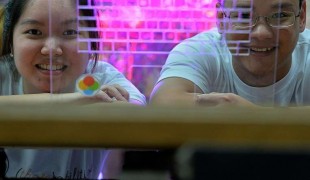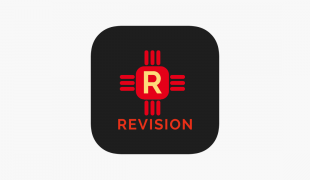- 6910
- 393
- 3
- 2
- 0
- Help Ukraine
About the solution
“Waterskiing is fantastically exhilarating. It is something that, as a disabled person, you can get a lot out of. I was frustrated at the time that the blind slalom wasn’t a very good simulation of the able-bodied slalom”, the inventor confessed.
Being an engineer, Chris decided to take action and solve the problem on his own by creating a low cost audio slalom.
He used the sensor of a laser printer, the sound generator from a car anti-theft alarm and a cheap microprocessor to build an audio slalom.
“Based on the length and angle of the rope and knowledge of the boat’s speed, it is fairly basic geometry to work out where the skier actually is in terms of how far down the course have they gone, how wide have they gone. You can essentially construct an audio equivalent of the buoys and then give the skier a very loud signal that they are now going around the buoy”, Chris explained.
Chris participated in several disabled championships.
More info: https://twitter.com/Chris_mairs
Adapted from: http://www.ingenia.org.uk/Ingenia/Articles/624
What about you, do you have any solutions? Please post them on the Patient Innovation platform!
This solution shall not include mention to the use of drugs, chemicals or biologicals (including food); invasive devices; offensive, commercial or inherently dangerous content. This solution was not medically validated. Proceed with caution! If you have any doubts, please consult with a health professional.
DISCLAIMER: This story was written by someone who is not the author of the solution, therefore please be advised that, although it was written with the utmost respect for the innovation and the innovator, there can be some incorrect statements. If you find any errors please contact the patient Innovation team via info@patient-innovation.com
-
-
531
-
0
-
10860

Lowcost keyguard for disabled people
Video gaming
Writing (letters, songs, peoms)
Parkinson's Disease
Stroke
Muscular Dystrophy
Assistive Technology access
Strategy/Tip
Assistive Daily Life Device (to help ADL)
Chest pain or discomfort
Gait abnormalities (e.g., walking difficulties, unsteady gait)
Tremors
Muscle cramps or spasms
Difficulty coordinating movements
Stiffness or rigidity (difficulty moving)
Muscle weakness
Fatigue
Dizziness or lightheadedness
Numbness or weakness in the legs
Fainting or loss of consciousness
Irregular heartbeat (arrhythmia)
Cold hands or feet
Rapid heartbeat (tachycardia)
Transpiration (Sweating)
Shortness of breath
Chest tightness/pressure
Restoring mobility
Promoting self-management
Promoting inclusivity and social integration
General and Family Medicine
Neurology
Singapore
-
-
-
173
-
0
-
2413

Tyler, who is blind, is making fitness accessible to anyone with Revision
BODY BALANCE: Maintaining body balance
Website
Restoring mobility
Promoting self-management
Managing Neurological Disorders
Promoting inclusivity and social integration
Maintaining Balance and Mobility
Raise awareness
General and Family Medicine
Internal Medicine
Neurology
Ophthalmology
Pediatrics
Physical Medicine and Rehabilitation
United States
-
-
-
120
-
0
-
1315

Collaborator James Leckey makes equipment to improve the quality of life and social inclusion of children with special needs
MOVING IN A WHEELCHAIR: Moving using a wheelchair.
BODY BALANCE: Maintaining body balance
STANDING UP: Standing up from a seated position
Playing
Neuromuscular Disorders
Assistive Daily Life Device (to help ADL)
Walking Aid (wheelchair/walker/crutches)
Assistive Technology access
5 Senses support devices: (glasses, hearing aids, headphones...)
Restoring mobility
Promoting self-management
Managing Neurological Disorders
Promoting inclusivity and social integration
Maintaining Balance and Mobility
Raise awareness
General and Family Medicine
Neurology
Orthopedics
Pediatrics
Physical Medicine and Rehabilitation
United States
-
 en
en